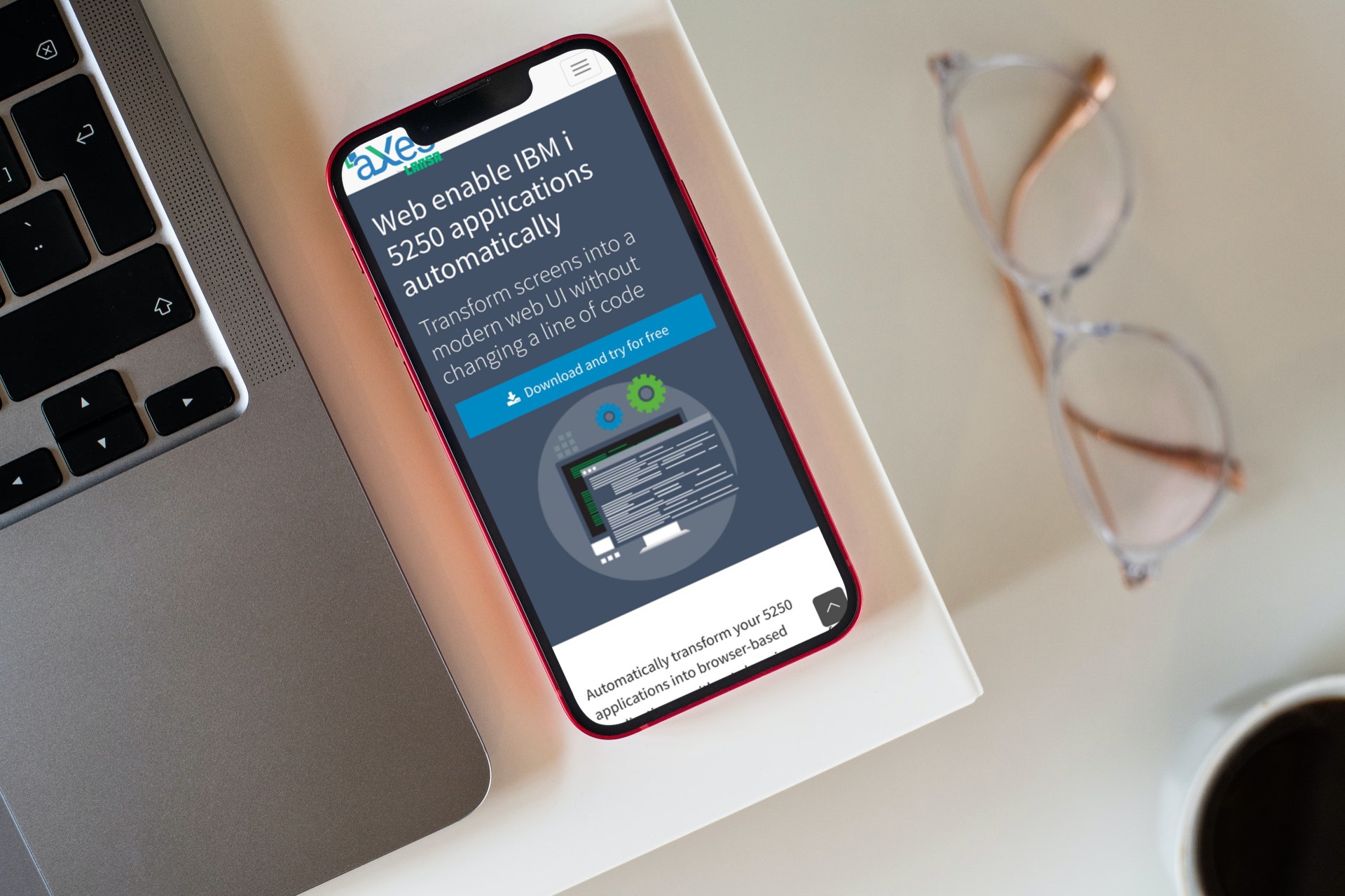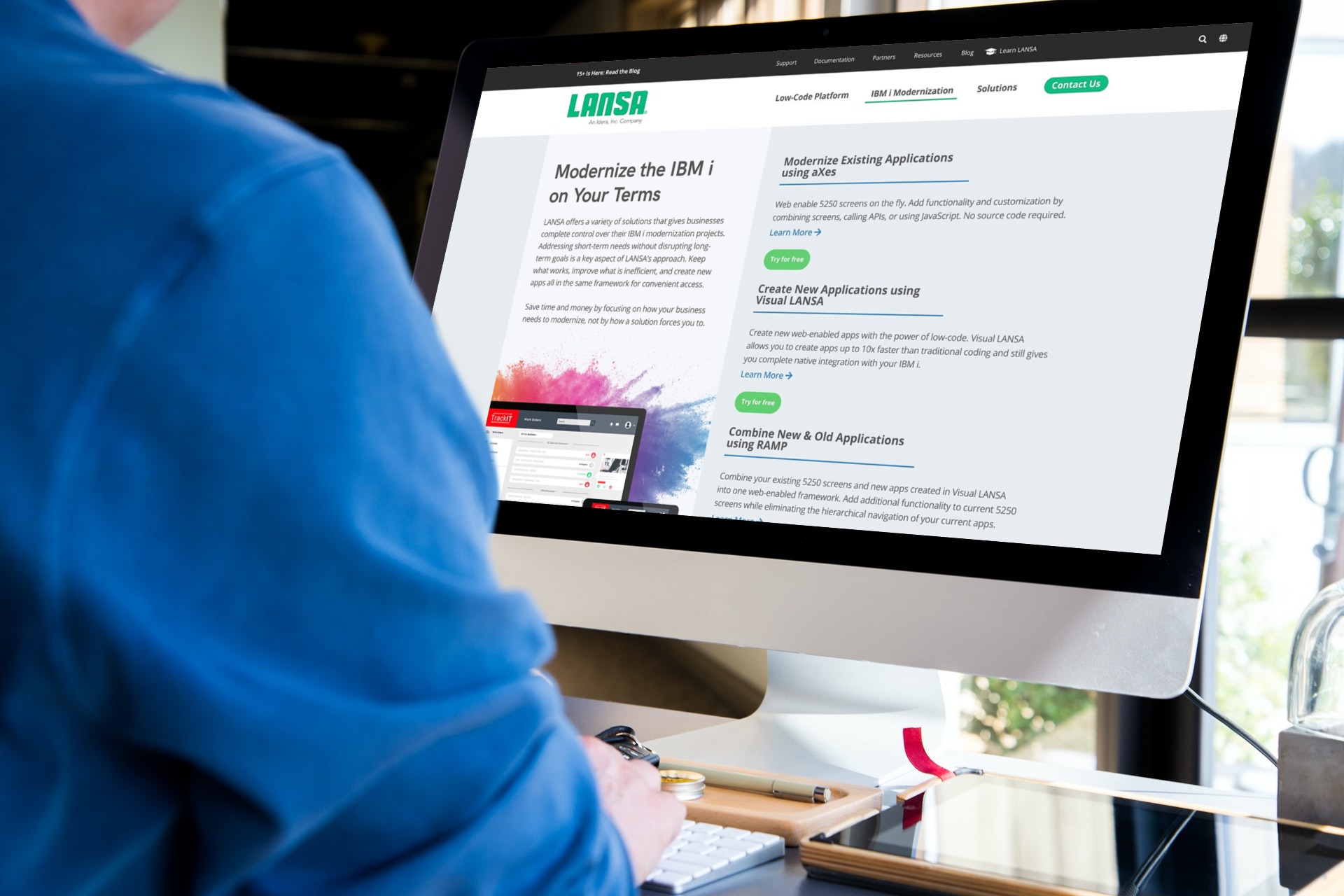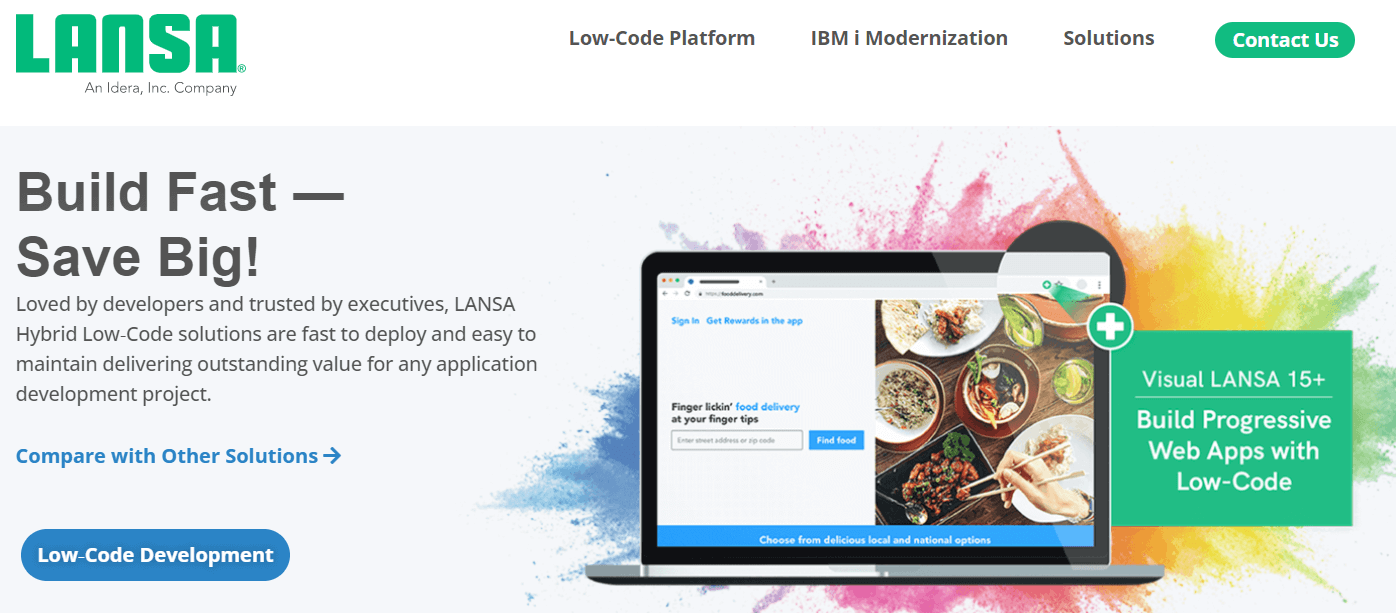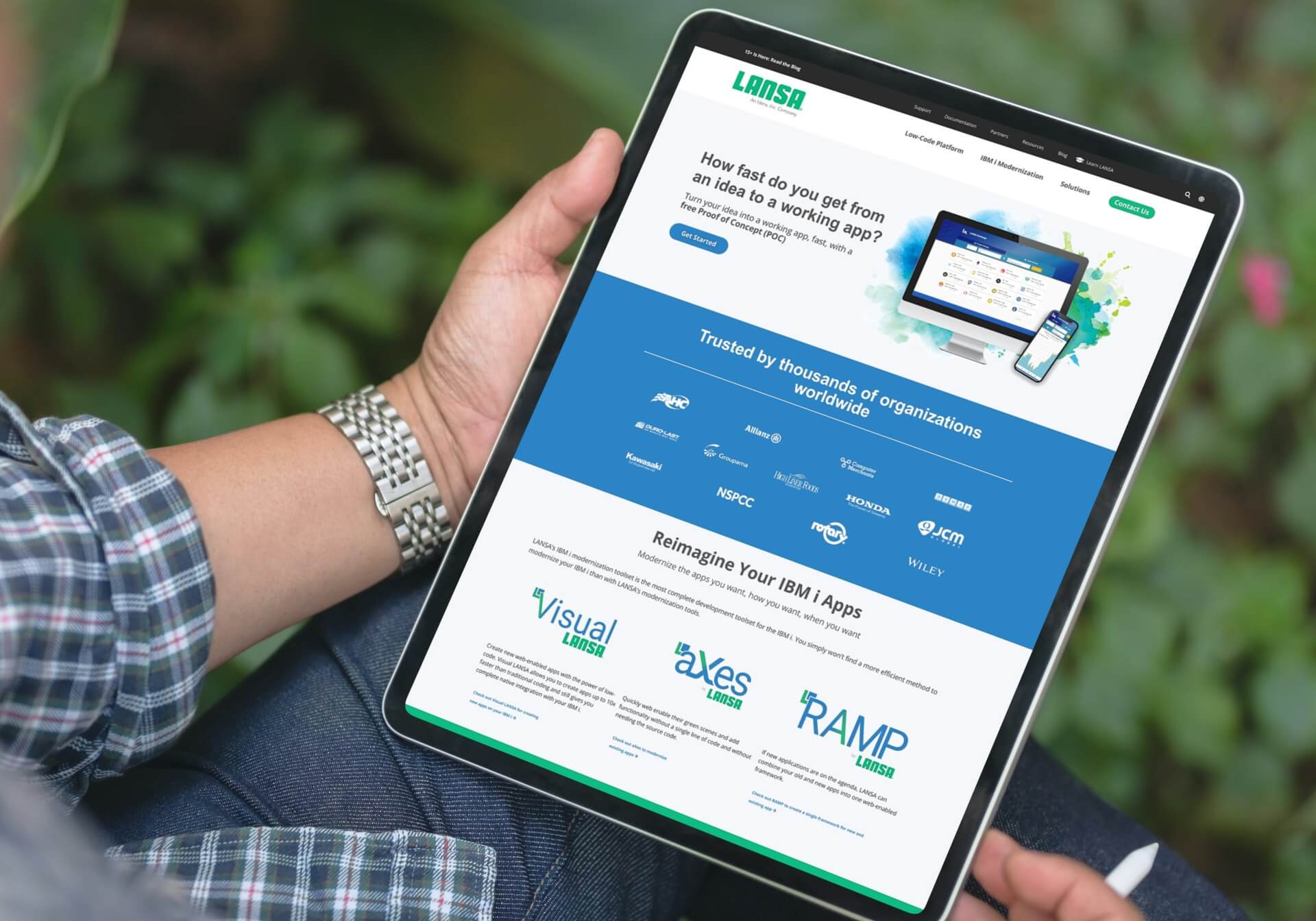When it comes to legacy application modernization (specifically when dealing with IBM applications), there will always be a lot of questions. The goal of this article is to profile these questions and to answer some of them with powerful application modernization strategies. This will hopefully help managers make better decisions about IBM i development.
Throughout the course of this article, it will become clear that IBM i development need not be daunting. In fact, if you understand the process and use the right tools it can be very beneficial.
What is a modern application, and how is it different from a legacy application?
When we talk about “modern applications,” we’re focusing on much more than just how they look and feel. Modern business applications can do complicated tasks that didn’t exist when legacy applications were made. Here are some of the most important ways that modern applications are different from older ones:
- Most legacy applications were made to focus on only one business process (e.g., billing). Modern apps can run processes and solutions that work with other apps. IBM i app modernization can bring legacy apps into the modern world by letting them work together in company-wide systems.
- Legacy apps are often very closely linked to databases. It can sometimes be slow and cumbersome to access the data they contain. This is because data management and searching are done in much more sophisticated ways in modern applications. Because of this, modernization will usually lead to faster and better ways to manage data.
- Lastly, there is the question of how data and processes are presented visually. Most legacy apps are not very flexible in this area. For example, they might not be able to use graphics or may only be able to use green screen technology. Modernizing an app will let the data be shown in more interactive and visually appealing ways. It can also make older interfaces work on the web (e.g., where a green screen is used inside a web interface or a web interface is provided on top of a green screen backend).
In the next two sections, we’ll talk about the pros and cons of going the route of modernization. First, we will focus on some reasons why legacy applications should be kept. Then we will discuss some of the problems that come with keeping old technology around.
Why Should We Keep Legacy Applications?
When thinking about modernization, it’s easy to wonder if it wouldn’t be better to just start over from scratch. Would it not be better to just get rid of legacy apps and forego IBM i development? This seems like a good idea in some ways, but there are also some very good reasons to keep using old applications and modernize them instead. Here are some of them:
- First, there’s the old saying, “If it’s not broken, don’t fix it.” People who are used to modern systems may find legacy applications harder to use but many of them are still useful. So, the goal should be to bring reliable and useful technology into modernity, not to get rid of it.
- Many companies have put a lot of money into legacy applications and replacing them would make a big dent in their finances. In some situations, it would be better to keep using legacy applications as long as they are contributing to the company bottom line.
- Lastly, it should be said that IBM i development is about much more than just making legacy apps look and feel new. For example, with the help of web services it may be possible to bring old applications into an interconnected environment. In fact, managers are often surprised by how much can be done in this area.
What are some problems that come with keeping legacy applications around?
In this section, we’ll talk about some of the problems that come with using older technology. It is important to take these factors seriously because no business wants to lose its competitive edge. Especially not through the avoidable problem of unreliable business processes. This list should not be seen as a deal breaker. In fact, most of the problems on the list can be fixed with a well-run IBM i app modernization program. Having said that, here are some of the problems that come with sticking with old applications:
- Business and market conditions change all the time, the technology we use should keep pace with this. If we don’t stay on the cutting edge (for example, by modernizing), we can easily lose our competitive advantage. Specifically, businesses need to be able to support applications in an interconnected environment. This will include giving a wide range of users access to important business processes. In applications that haven’t been updated, such features are usually not available.
- Second, there is the problem of staffing. Fewer and fewer people have the skills to work with older applications. Training younger developers to work in this field takes time and could slow down the overall productivity of the workforce.
- Also, it is hard to combine older applications with newer technologies and to scale them quickly. Especially in ways that will help them meet changing needs and take advantage of new opportunities.
- All the above factors can have a significant impact on costs. This means that keeping old application systems running can be quite expensive.
Again, listing these factors is not intended to show that legacy applications shouldn’t be used. Instead, they show how important it is to have a well-executed plan for modernizing IBM i apps.
How can a competitive edge be gained by using updated applications?
We should always try to do things faster and better while keeping a close eye on the bottom line. Here is where modernizing your IBM i apps can give you a clear advantage over your competitors. Modernization can help businesses get the best of both old and new ways of doing things. In other words, they can keep using technologies that have been tried and tested. However, they can also use them in new ways that gels with the way technology works today.
IBM i development shouldn’t be seen as a “one size fits all” process. Companies will need to get a clear picture of where and how they use legacy applications. After that, they should figure out where modernization would be helpful and desirable. After a clear understanding is achieved, the process of finding the best solutions can start.
Companies will have to work out which legacy processes can be brought into the modern technological environment most effectively through modernization. In the end, those who run integrated systems that use the best of both old and new technology will be in the best position. Especially compared to those who are stuck in the past. As well as those who switched to new technology without giving much thought to what they were leaving behind.
What kinds of solutions are there?
Now that we profiled some some of the things to think about when considering IBM i development, it’s good to know that there are some great solutions out there. This is where LANSA comes into play. LANSA has been in the top of the IBM I modernization market for a long time. Our wide range of products includes tried-and-true solutions for people who want to see the benefits of bringing their old applications into the modern technology world. Even if you think that there is no way that your legacy applications could be modernized, we might be able to help. Find out today what LANSA can do for you, contact us!
Also be sure to grab your free copy of Application Modernization for Dummies, LANSA Edition.

























